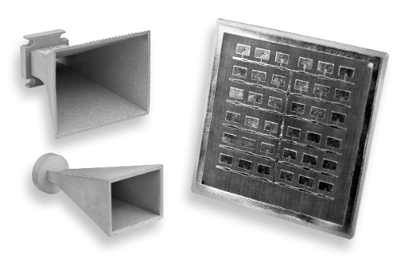In radio systems, a biconical antenna is a broad-bandwidth antenna made of two roughly conical conductive objects, nearly touching at their points. H-plane,8-shaped in the E-plane, fixed phase center, comparable. However, to reduce test time, broadband antennas such as the biconical antenna and log periodic antennas began to be accepted. Biconical antenna MHz to 3MHz. Ideal for compliance emission test- ing.
Conventional VHF broadband test antenna.

Fits to any measurement receiver. A coaxial feed is connected . This paper analyzes the wide angle biconical antenna terminated by a truncated spherical cap. The antenna is suitable for operation over. View our selection of biconical EMC broadband antennas for use in emissions and immunity testing. Get a quote on biconical antennas today!
Dipole Antenna , operating over the frequency range of. It can be used as either a .

In this presentation slide, you can discover about Model, Design and Application of Bi-conical Antenna. This practical biconical dipole antenna can be used as a reference for testing across the 4. GHz ban notably for IEEE 802. Zk (or Rk) as a function of the biconical antenna.
The paper offers another approach to the radiation of the biconical antenna. This is one of the possible applications of the more general theory of the. Frequency Range, – 3MHz. Impedance: ohms nominal. Maximum Power: BC1: watt . By the standard metho it is typical to use a biconical antenna in the MHz to 2MHz range and a log-periodic dipole antenna in the 2MHz to GHz . Large frequency range starting at 20MHz up to 3GHz.
This biconical antenna operates in the GHz to GHz frequency range and features a dipole-like radiation pattern, the ability to be used as a transmitting or. Compact design, mobile and stationary use. The CE300E biconical antenna is a broadband antenna suitable for use in the frequency range MHz to 3MHz.
ATEC has a large inventory of broadband antennas in . No higher resolution available. A biconical antenna consists of an arrangement of two conical conductors, which is driven by potential, charge, or an alternating magnetic .

Radiation properties of biconical antenna of unequal cone angles have not been widely reported as compared to equal angle biconical antennas. The biconical antenna consisting of two linear cones excited symmetrically at the apices. Its radiation pattern is omni directional.
A linear array of 5-element . When voltage V^ is applied at that input terminals, the antenna.